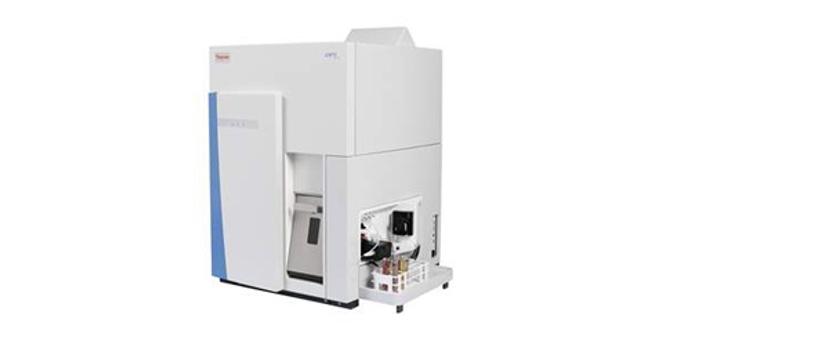Tackling the Threat of Lead Poisoning Posed by Game Meat
SelectScience interviews Senior Researcher, Katrin Löschner, on her recent research into lead nanoparticles
19 Jan 2017

Katrin Löschner, Senior Researcher, Division for Food Technology, The National Food Institute The National Food Institute, Technical University of Denmark The National Food Institute researches and communicates sustainable and value-adding solutions in the areas of food and health for the benefit of society and industry.
Lead is a highly toxic metal that can accumulate in the human body, causing serious adverse effects. Food is a major source of lead exposure, for example from the ingestion of contaminated water or cereals. Some game meat may contain high levels of lead fragments, as a result of being shot with lead bullets. A recently published study was able to detect lead nanoparticles in game meat using mass spectrometry technology. SelectScience® spoke to Senior Researcher, Katrin Löschner, to find out more.
SS: Can you start by telling us your place of work and your full job role please?
KL: I work at the National Food Institute, Technical University of Denmark, in the Division for Food Technology. I am employed as a Senior Researcher for the Research Group for Nano-Bio Science. My expertise is in nanoparticle detection and characterization, in food and biological matrices.
The importance of lead nanoparticle detection
SS: You recently published a paper on lead nanoparticle analysis, why is it important to detect lead particles in game meat?
KL: Barbro Kollander from The Swedish National Food Agency contacted us with regards to the detection of lead nanoparticles in meat. Lead is very toxic to humans, and so the lead shot used in game hunting is a cause of concern. Although game makes up only a very small portion of most people’s diet, the families of hunters (including children and pregnant women), often eat this meat several times a week. No level of lead consumption is deemed safe, so it is important to determine the level of risk to consumers.
We tested samples from wild boar and roe deer carcasses that were shot with lead core bullets. We analyzed samples from the wound channel not intended for consumption), an area with high probability of lead nanoparticle contamination. We also tested samples further away from the wound site, which had a very low probability of lead nanoparticle contamination.
In previous work, I had already developed a sample preparation method for silver nanoparticle analysis, so we optimized this for use in lead nanoparticle detection. Using this method, the tissue samples were digested with an enzyme solution and then highly diluted with ultrapure water.
We then carried out single particle inductively coupled plasma-mass spectrometry (spICP-MS) analysis on the liquid suspension, using a Thermo Fisher ScientificTM iCAP Q ICP-MS instrument.

The Thermo Fisher ScientificTM iCAP Q ICP-MS instrument
SS: What conclusions did you reach during your research?
KL: We found a large concentration of lead nanoparticles in the wound channel, ranging from 27 to 50 million particles per gram of meat. We didn’t find any lead nanoparticles larger than 40 nm, in the ‘safe’ tissue samples taken from the site further away from the gunshot wound. 40 nm was the size limit of our detection capabilities.
Our findings show that lead nanoparticles can be detected in game meat. Our method of enzymatic digestion followed by spICP-MS analysis worked well and shows promise for the future detection and characterization of nanoparticles in meat/tissue.
We don´t know yet if the nanoparticles are formed during impact of the bullet or if they originate from larger particles which slowly dissolve during storage of the meat. It is possible that particles smaller than 40 nm in diameter are present further away from the wound site. We would need to carry out further work and optimize the method further to determine this. Based on our results, it is certainly a good idea to recommend that people don’t eat meat very close to the wound site. More research will be required on the toxicological risk of these lead nanoparticles.
Single particle ICP-MS
SS: How did the technology that you are using help you to achieve your research goals?
KL: spICP-MS has high sensitivity and high specificity. It requires minimal sample prep once you have the particles dissolved in a liquid suspension. No column separations are required prior to mass spectrometry analysis. We have a very close relationship with Thermo Fisher and this enabled us to trial the equipment on a loan basis before we purchased it, at a very competitive price. Thermo Fisher has also been very helpful with feedback and method development, as well as technical support if we need it.
SS: What is next for food nanoparticle research?
KL: It is very interesting to see the presence of nanoparticles in our food. Not just from lead, but from other natural and manmade sources too. Some enter the food chain as food additives, such as silicon dioxide, others might come from food processing equipment, food packaging or naturally from fish or plants in the diet. More research is required to investigate the presence of nanoparticles in our food. We have some interesting ideas for further lead nanoparticle research although our direction will depend on future funding. It will be necessary to carry out more work on the spread and toxicological effect of lead nanoparticles in the human body.
